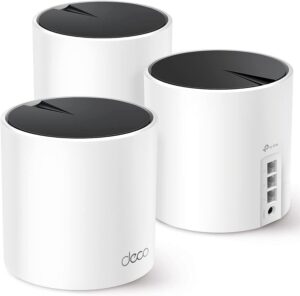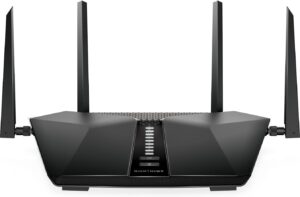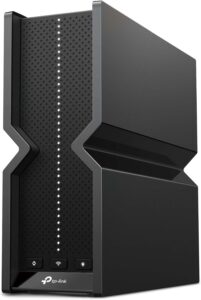You’re streaming a new show, midway through a juicy plot twist, and then… buffering. Or maybe your Zoom meeting suddenly drops while you’re presenting. Sound familiar? If you’re living in a larger home, WiFi dead zones may be the culprit—and they’re as frustrating as they sound.
With our increasing reliance on WiFi for everything from working remotely to streaming 4K videos, gaming, and running smart home devices, a patchy connection just won’t cut it anymore. The good news? Dead zones can be fixed! Whether you’re struggling to get WiFi in your upstairs office or the backyard patio, we’ve rounded up practical solutions (and some cool tech) to transform your experience.
Recommended Wifi Routers for Large Home
 |
TP-Link Deco AX3000 WiFi | Check Price |
 |
NETGEAR Nighthawk WiFi | Check Price |
 |
TP-Link Tri-Band BE9300 WiFi | Check Price |
 |
ASUS RT-AX86U Pro | Check Price |
 |
Linksys Atlas WiFi 6 Router Home WiFi | Check Price |
Understanding Dead Zones
What Are WiFi Dead Zones?
Dead zones are areas in your house where WiFi signals either drop significantly or don’t reach at all. They’re super common in larger or multi-story homes but can show up pretty much anywhere.
Common Causes of Dead Zones
- Physical Obstacles: Thick walls, floors, or large furniture can block WiFi signals.
- Electronics Interference: Objects like microwaves, TVs, or even your neighbor’s WiFi can interfere with your connection.
- Router Limitations: Older routers often don’t have the range or capacity to cover big spaces.
The Impact of Dead Zones
A WiFi dead zone is more than just a minor inconvenience—it disrupts everything from video calls to your smart camera’s ability to stay connected. And when multiple devices are fighting for a weak connection, frustration levels skyrocket.
How WiFi Works in Large Homes
WiFi Frequencies (2.4 GHz vs. 5 GHz)
WiFi operates on two main frequency bands.
- 2.4 GHz is great for long-range connectivity but offers slower speeds.
- 5 GHz delivers faster speeds but has a shorter range.
Pro Tip: Dual-band routers like the Linksys Atlas MX2000 provide the best of both worlds, letting you choose depending on your needs.
The Role of Antennas
Routers with multiple antennas, like the TP-Link BE9300 WiFi 7 Router, spread their signals much better than single-antenna models. These internal antennas boost strength and range, making them ideal for larger homes.
Importance of WiFi Standards
Upgrading from older WiFi models (like WiFi 4) to newer ones (like WiFi 6 or WiFi 7) can be game-changing. Newer standards prioritize range and speed, ensuring seamless performance across your entire home.
Choosing the Right Equipment
Mesh Systems for Seamless Coverage
Mesh systems are the superheroes of home WiFi. Devices like the TP-Link Deco AX3000 use multiple units spread around your house to create a single, strong network.
- Bonus: Ethernet backhaul ensures consistent speeds even during peak usage.
High-Performance Routers
If you prefer a traditional router and don’t mind some manual setup, try the NETGEAR Nighthawk RAX54S. Its AI-enhanced features optimize for smoother gaming, streaming, and multi-device connectivity.
WiFi Extenders vs. Mesh Systems
While extenders are cheaper, they don’t offer the seamless experience of mesh systems. Extenders create separate WiFi networks that can result in lags when moving between zones.
Practical WiFi Optimization Tips
Router Placement Strategies
Your router’s placement affects signal strength.
- Keep it Centered: Place it in the middle of your home’s main area.
- Elevate It: Routers on bookshelves or mounted on walls perform better than those on the floor.
- Avoid Obstacles: Keep your router away from thick walls and appliances.
Channel Optimization
Not all WiFi channels are created equal!
- Use analyzer apps like WiFi Analyzer to see which channels are less crowded.
- Adjust your router settings to switch to these channels—fewer devices on the same frequency mean smoother performance.
Device Management
Too many devices connected to your network? Here’s how to fix it.
- Use QoS (Quality of Service) settings to prioritize high-bandwidth activities, like streaming.
- Disconnect inactive devices hogging bandwidth unnecessarily.
Regular Equipment Maintenance
Always keep your router’s firmware updated! Not only does this improve performance, but it also protects your network from vulnerabilities.
Solving Specific Challenges in Big Homes
Multi-Story Coverage
If you’re dealing with multiple floors, consider a mesh system like the TP-Link Deco AX3000. Its seamless coverage extends to all levels, ensuring no dead spots on any floor.
Managing High Device Loads
The Linksys Atlas MX2000 can handle over 50 devices at once—perfect for tech-savvy households juggling tablets, gaming consoles, and smart devices.
Minimizing Interference
- Identify interference sources, like baby monitors or microwaves.
- Move your router or interfering devices to reduce overlap.
Advanced Solutions for Persistent Issues
Powerline Adapters
Powerline adapters use your home’s electrical wiring to extend WiFi signals to hard-to-reach areas. They’re a great alternative if physical distances are your biggest barrier.
Multiple SSIDs
Split your network into multiple SSIDs for work, family, and guest use. This helps reduce congestion and prioritizes essential devices.
Outdoor Coverage
Want to binge-watch Netflix on the patio? Specialized outdoor extenders or weatherproof mesh units can help expand coverage to your garden or pool area.
The Importance of Securing Your Network
Best Practices for WiFi Security
- Use WPA3 encryption for maximum protection.
- Regularly change and update your passwords.
Built-in Security Features
Devices like the NETGEAR Nighthawk RAX54S include features like built-in VPNs and advanced security settings to keep your home network safe.
Future-Proofing Your Home Network
WiFi 7 and Beyond
With its tri-band speeds and futuristic performance, the TP-Link BE9300 WiFi 7 Router ensures compatibility with upcoming devices while delivering blazing-fast speeds.
Preparing for Smart Homes
Expanding your smart home setup? Scalable systems like the Linksys Atlas MX2000 grow with your household, so you’ll always have enough coverage.
Your WiFi Should Work for You
Dealing with WiFi dead zones shouldn’t be a daily struggle, especially in big homes. From adjusting your router placement to upgrading to the latest mesh systems or high-performance routers, there are plenty of options to regain control over your connection. With a little strategy and the right tools, dead zones can become a thing of the past! Test some of these tips today and see how quickly your internet experience transforms.



